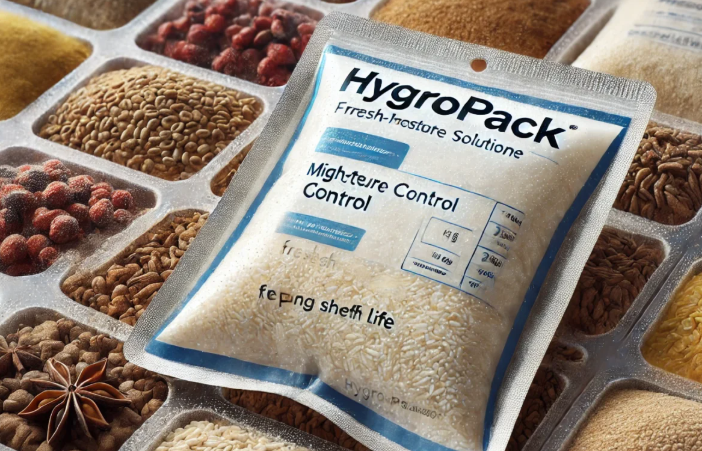Packaging technology has evolved significantly over the years, playing a critical role in preserving the quality of products, enhancing brand identity, and reducing environmental impact. Among the most innovative solutions introduced recently is HygroPack. This revolutionary packaging technology is changing the game in various industries, including food, pharmaceuticals, and consumer goods. By addressing both functional and sustainability concerns, it is setting a new standard for what packaging can achieve.
In this article, we will explore how it is transforming packaging, its key features, its impact on the industry, and its potential future applications.
What is HygroPack?
HygroPack is an advanced, moisture-absorbing packaging technology designed to maintain optimal humidity levels for products that are sensitive to moisture. It’s specifically engineered to protect goods from external environmental factors like temperature, light, and humidity, which could cause deterioration. This packaging solution is crucial for industries where product integrity is paramount, such as food, pharmaceuticals, electronics, and cosmetics.
By controlling moisture levels, it ensures that the contents inside remain fresh, potent, and safe for consumption or use. The technology relies on specialized materials that absorb excess moisture, preserving the quality and extending the shelf life of products. This makes it an invaluable tool in the packaging world.
Key Features of HygroPack
-
Moisture Control
The primary function of it is to regulate the moisture levels inside the packaging. Products, particularly food items, can degrade when exposed to excessive moisture, leading to mold, spoilage, and loss of flavor. With it, moisture is absorbed efficiently, creating an ideal environment for the product to stay fresh.
-
Extended Shelf Life
One of the most significant benefits of it is the ability to extend the shelf life of products. By maintaining the right balance of humidity, the technology prevents the growth of harmful bacteria, mold, and fungi, which can lead to spoilage. This ensures that products, especially food and pharmaceuticals, remain safe and effective for a longer period.
-
Sustainability
Sustainability is a growing concern for businesses and consumers alike. It incorporates environmentally friendly materials that help reduce waste and the carbon footprint associated with traditional packaging. The packaging is often recyclable and can be reused, minimizing the environmental impact.
-
Versatility
It is not limited to a single industry. It can be used across various sectors, including food, medicine, electronics, and more. This versatility makes it a go-to solution for many businesses looking to improve their packaging processes.
-
Customization
Every product has different needs when it comes to humidity control. It can be customized to suit specific requirements, depending on the type of product being packaged. Whether it’s a food item that requires low moisture or a pharmaceutical product that demands a precise humidity level, it provides tailored solutions.
Impact of HygroPack on Various Industries
-
Food Industry
In the food industry, moisture control is critical for maintaining the freshness and safety of products. It has proven especially useful in packaging perishable food items such as baked goods, meat products, and dried foods. By keeping moisture levels in check, the packaging technology prevents spoilage, extends shelf life, and reduces food waste.
- Baked goods like bread, pastries, and cakes benefit from it as it prevents them from becoming soggy or stale.
- Dried foods like nuts, dried fruits, and snacks stay crisp and fresh, as excess moisture is absorbed.
-
Pharmaceuticals
The pharmaceutical industry requires strict conditions for product storage and transportation. Medications and vitamins can lose their potency if exposed to moisture. It ensures that these products are stored in the optimal environment to maintain their effectiveness. Its ability to regulate humidity helps safeguard the integrity of medical products, reducing the risk of spoilage and contamination.
-
Electronics
It is also beneficial in packaging sensitive electronic components such as circuit boards, batteries, and smartphones. Moisture can cause corrosion or malfunction in electronic devices. By maintaining the correct moisture levels inside the packaging, it protects valuable electronics from potential damage during shipping or storage.
-
Cosmetics
Many cosmetic products are sensitive to environmental factors like humidity. For example, creams, lotions, and powders can degrade when exposed to excess moisture, affecting their texture and efficacy. It ensures that cosmetics remain fresh, preserving their texture, scent, and overall quality until they are used by consumers.
How HygroPack Works?
The working principle behind it lies in the use of special moisture-absorbing materials. These materials are incorporated into the packaging design and have the ability to attract and absorb excess moisture in the surrounding environment. As moisture levels rise, the materials in the packaging absorb it, keeping the contents dry and stable.
The process involves the following steps:
- Initial Packaging: Products are placed in packaging that incorporates this technology.
- Moisture Absorption: If the surrounding environment is humid, the materials in the packaging absorb moisture, preventing condensation or mold growth inside the package.
- Consistent Humidity Control: The material maintains consistent moisture levels over time, ensuring that the product remains in an ideal condition until it is opened by the consumer.
The Future of HygroPack Technology
As industries continue to grow and evolve, so will the applications for it. The future of this technology looks promising, with potential advancements in the following areas:
-
Smarter Packaging
The integration of smart technology into packaging is on the rise. In the future, it could be enhanced with sensors that monitor humidity levels in real-time. This would provide businesses and consumers with data on product conditions, improving quality control and reducing waste.
-
Integration with Other Sustainable Technologies
As sustainability becomes an even greater priority, it could be integrated with other eco-friendly packaging technologies. This might include biodegradable or compostable materials, helping to further reduce the environmental impact of packaging.
-
Customization for Specific Products
As demand for personalized products grows, it may offer even more customization options. This could include fine-tuning humidity control for specific products or incorporating packaging features that suit the needs of niche markets, such as organic products or luxury items.
Conclusion
In conclusion, HygroPack is a groundbreaking packaging technology that is revolutionizing how products are preserved, protected, and delivered. With its moisture control capabilities, extended shelf life, and versatility across various industries, it is setting a new standard for packaging solutions. Its impact is particularly significant in the food, pharmaceutical, electronics, and cosmetics industries, where maintaining the integrity of products is crucial.
As technology continues to evolve, the future of it looks even brighter. With potential advancements in smart packaging and sustainability, it is well-positioned to remain at the forefront of the packaging industry, offering solutions that meet the demands of today’s marketplace and beyond.
FAQs
What industries benefit most from this technology?
HygroPack benefits industries such as food, pharmaceuticals, electronics, and cosmetics, where moisture control is crucial for product preservation.
How does it extend the shelf life of products?
By regulating moisture levels inside the packaging, it prevents the growth of mold, bacteria, and fungi, which helps maintain product freshness and safety for longer periods.
Is it environmentally friendly?
Yes, it is designed with sustainability in mind, using eco-friendly materials that reduce waste and promote recyclability.
Can it be customized for different products?
Absolutely! it can be tailored to meet the specific moisture control needs of various products, ensuring optimal preservation.
What are the future advancements expected in this technology?
Future advancements include the integration of smart sensors for real-time humidity monitoring, enhanced customization for specific products, and the incorporation of more sustainable materials.







